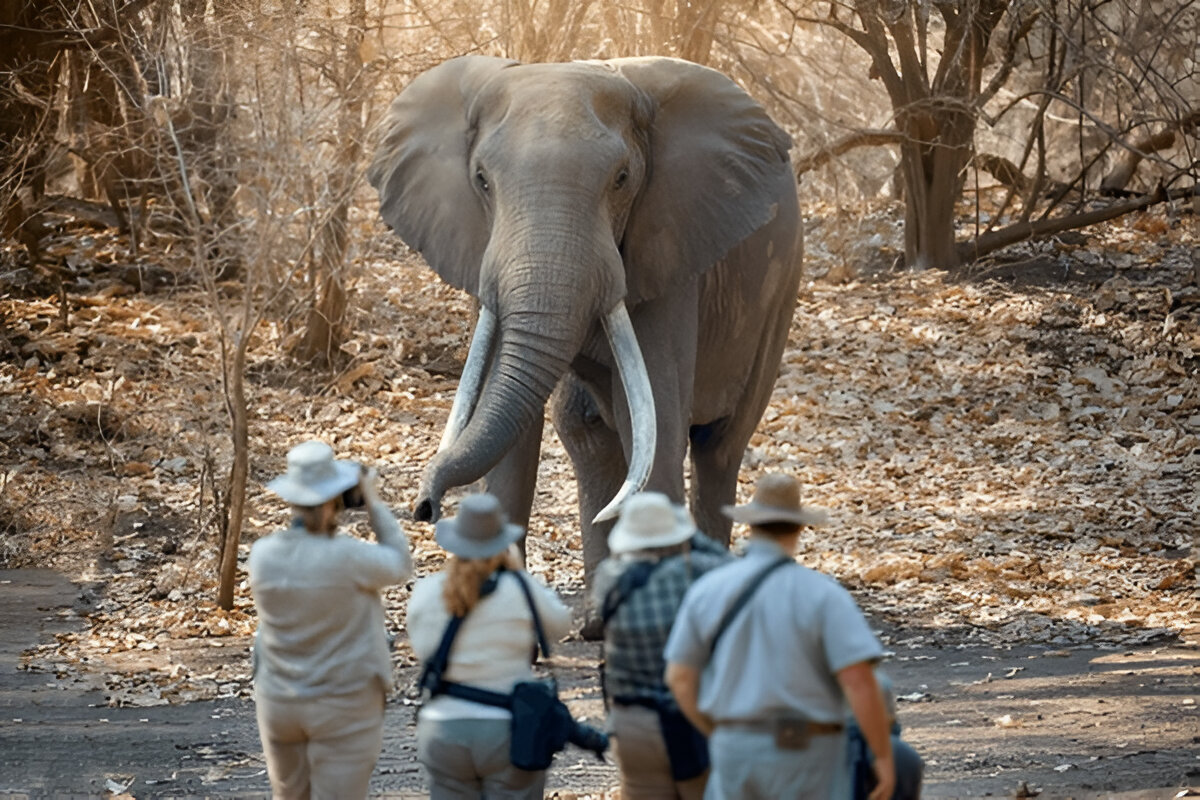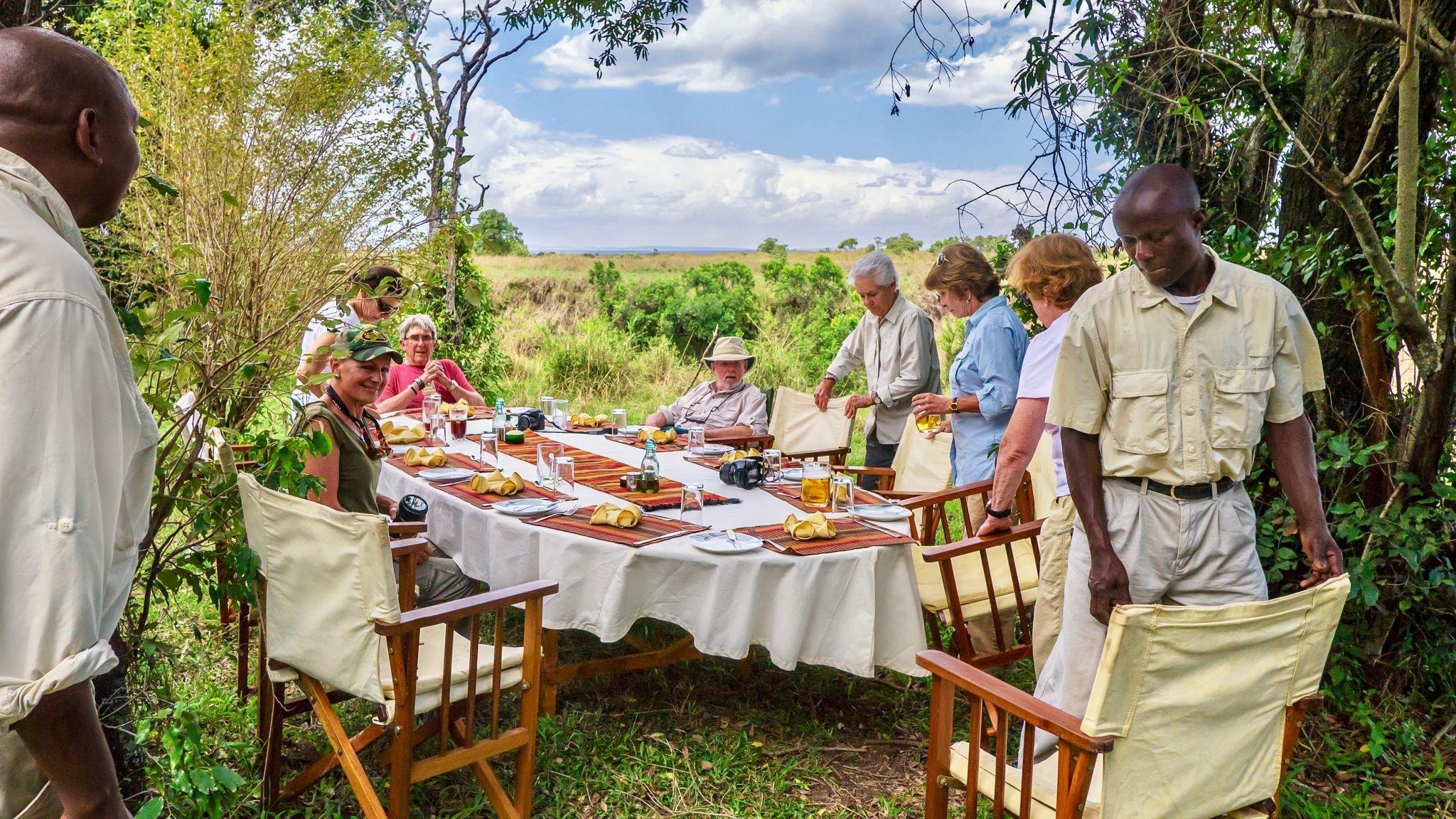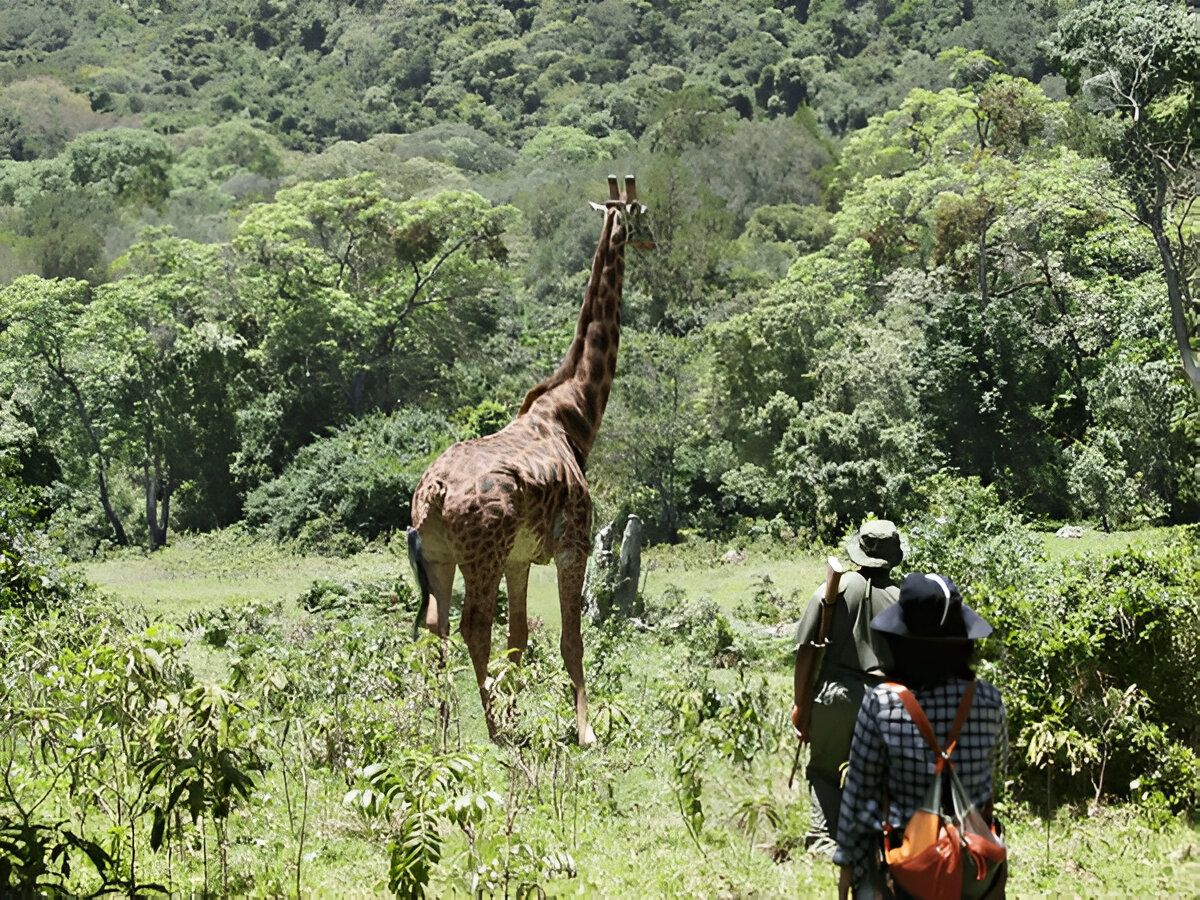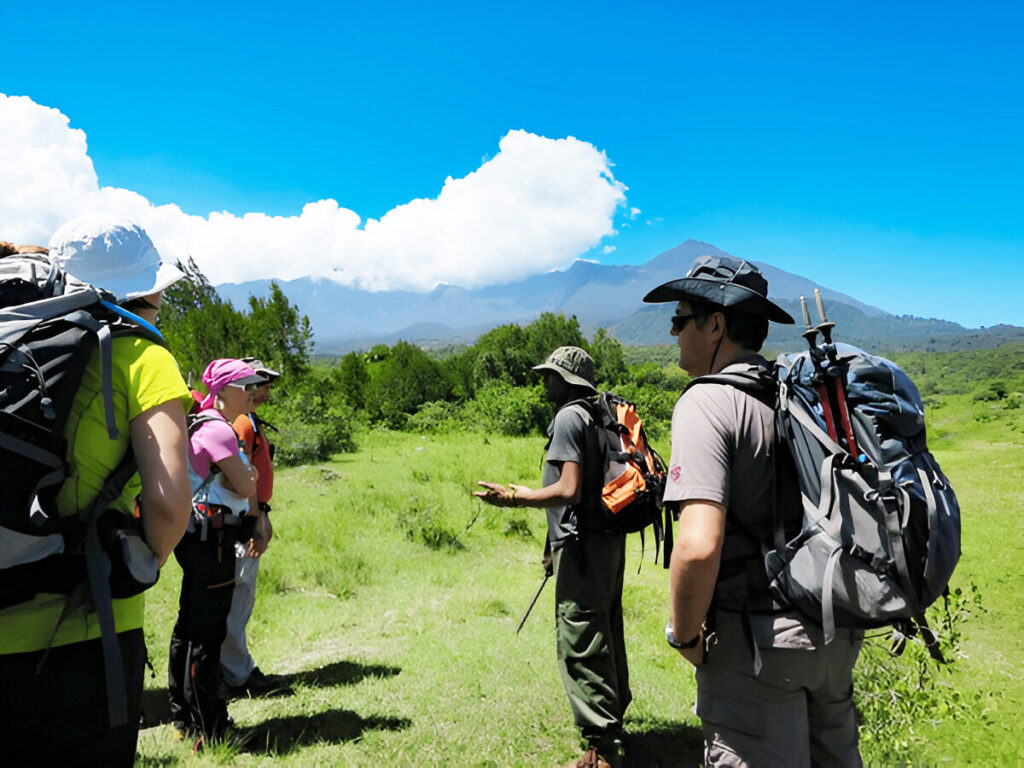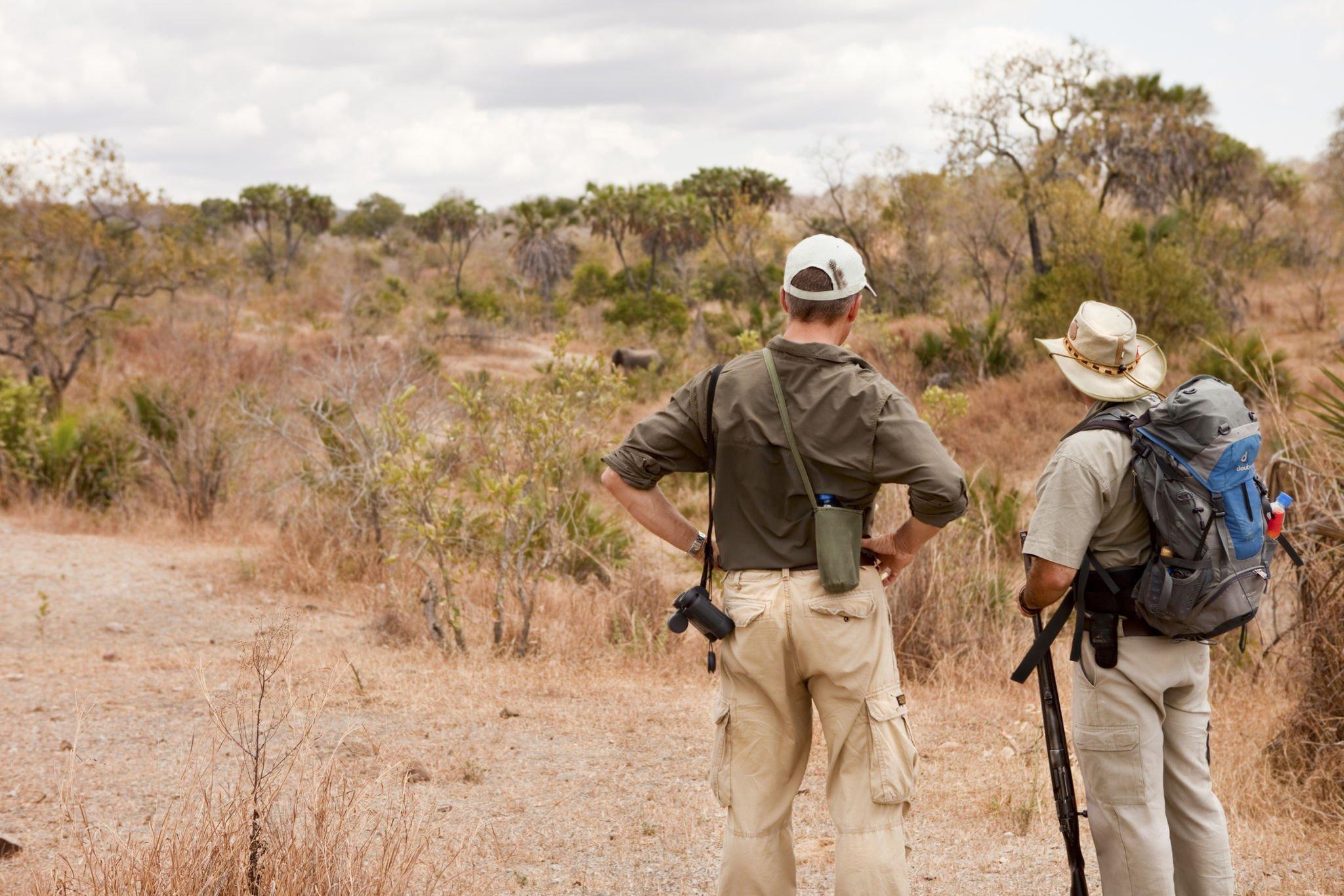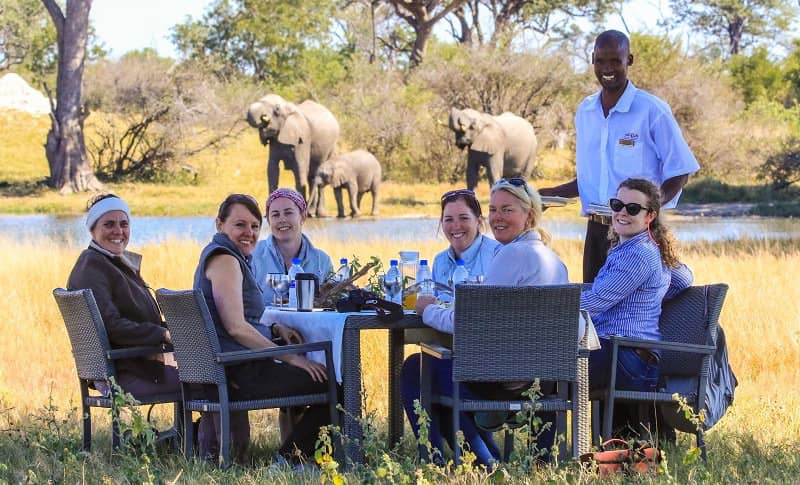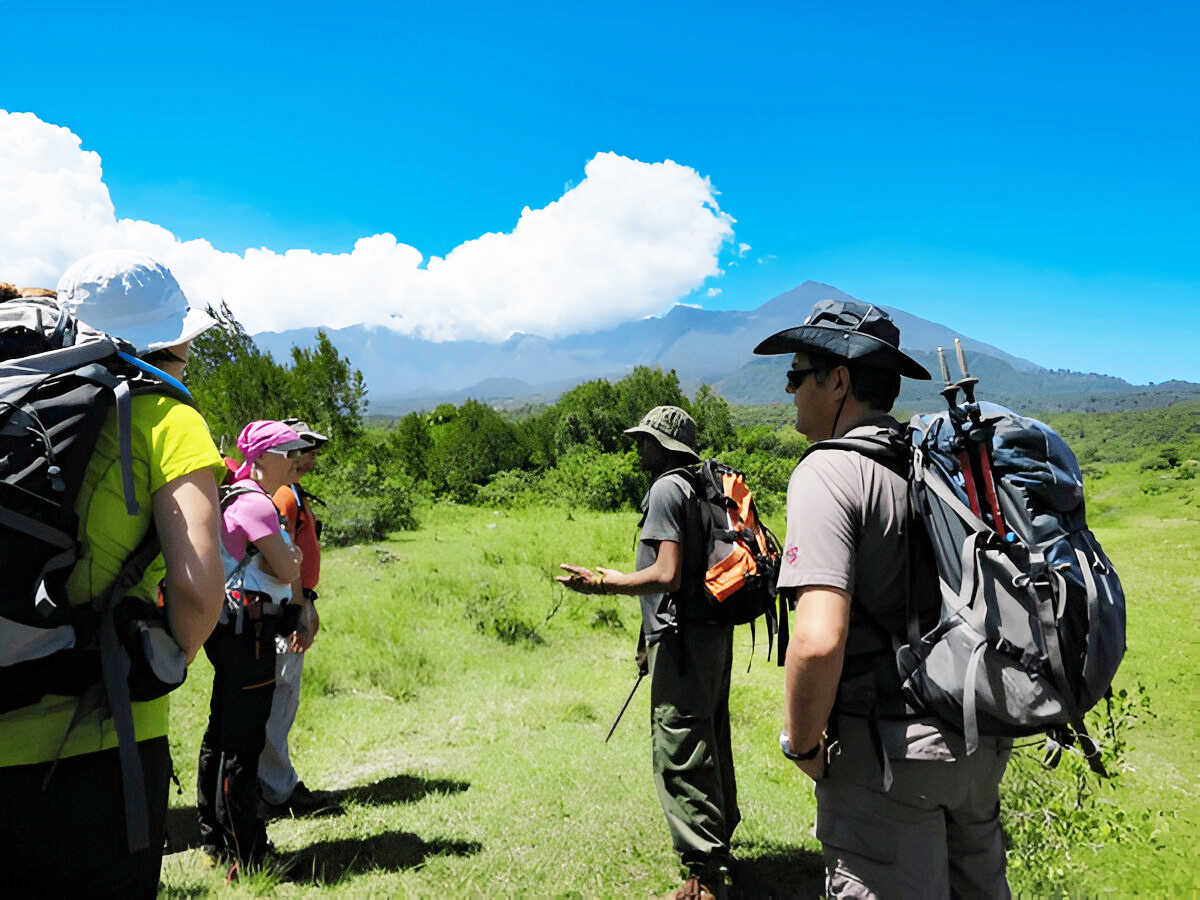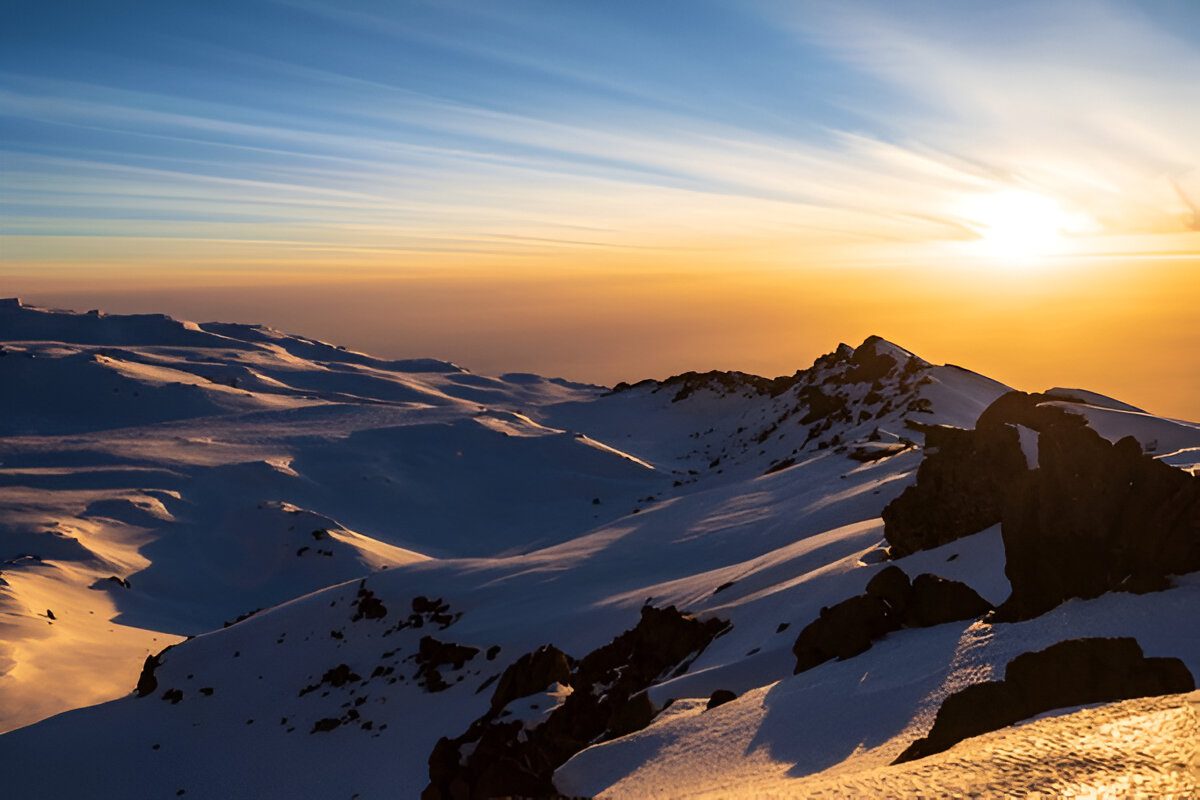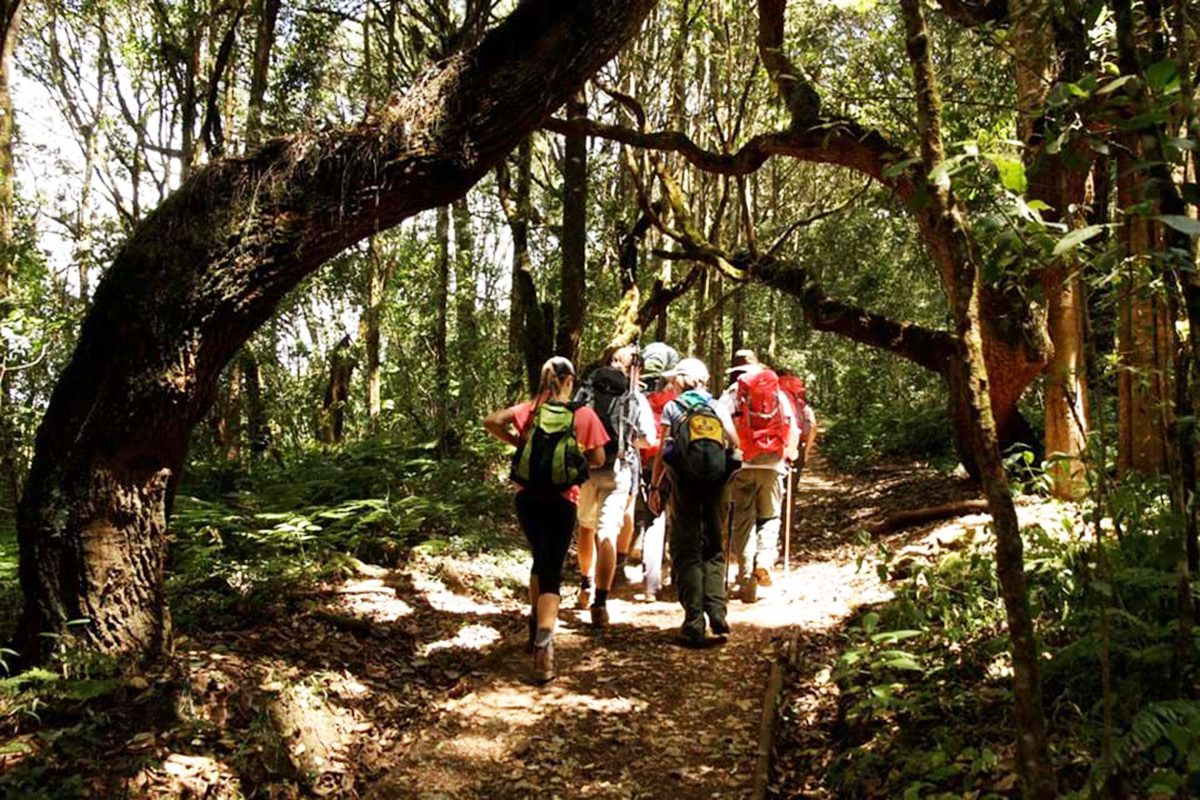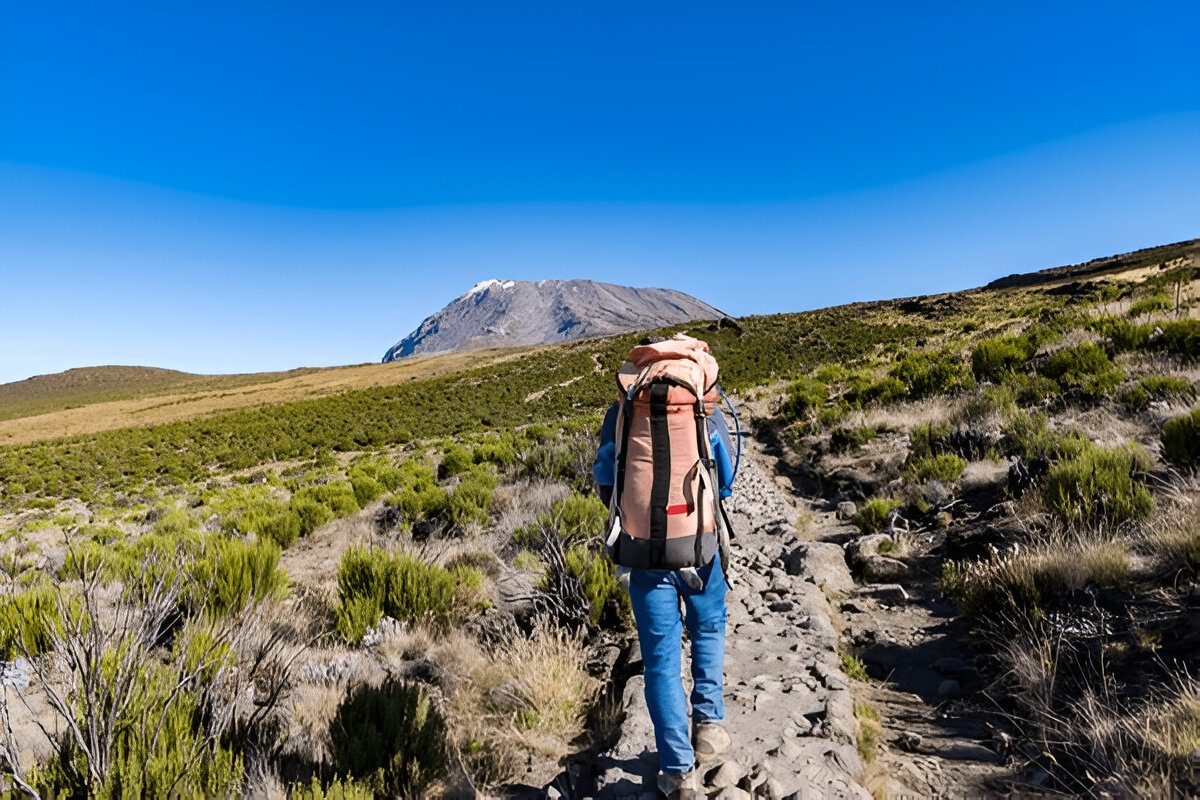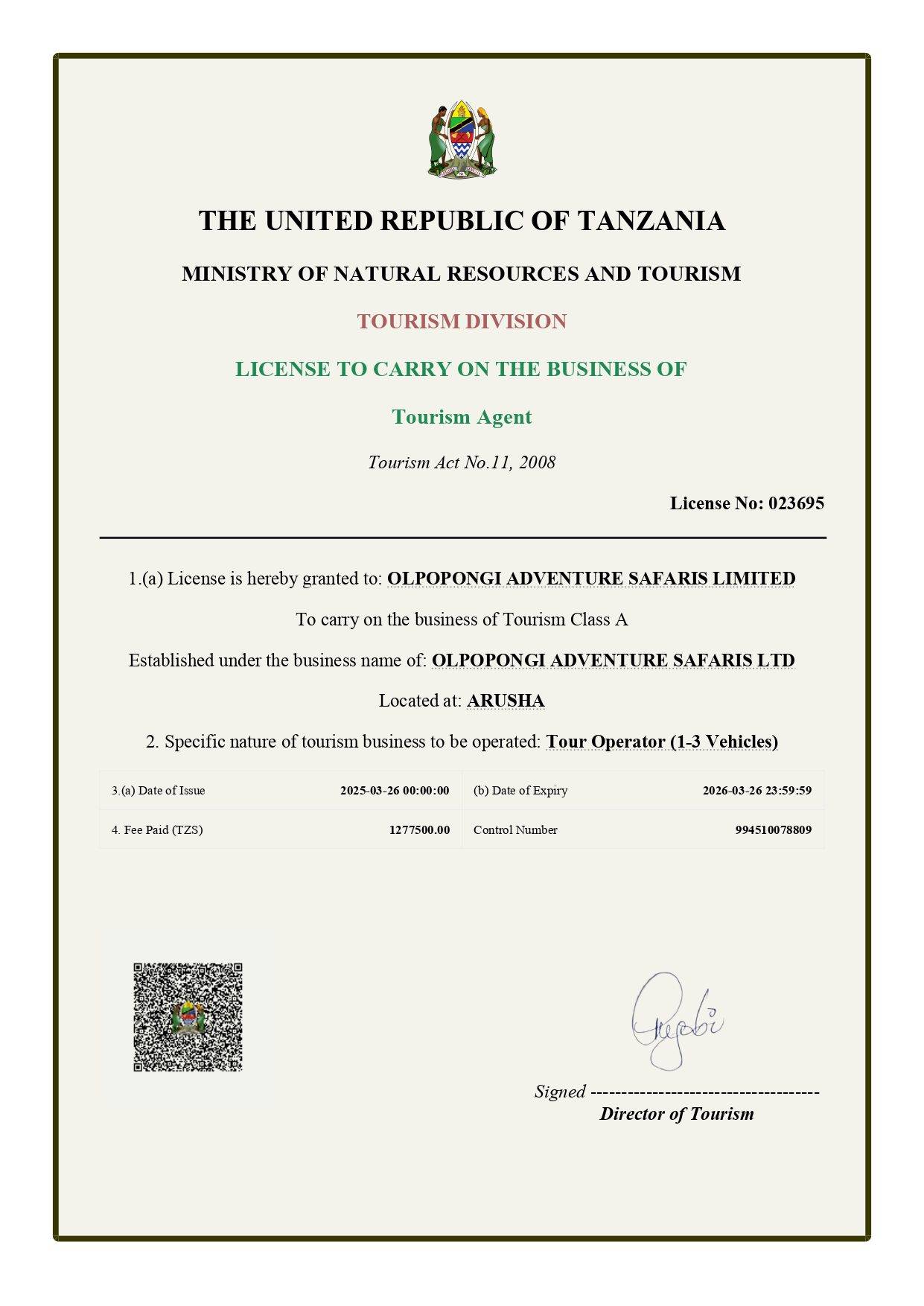A Ground-Level Safari Experience
This isn’t about rushing from one animal sighting to another. It’s about full sensory immersion. You’ll move silently through the bush, learning to read nature’s clues—fresh tracks in the sand, a snapping twig, a whisper of movement in the grass. The excitement builds not from what you see first, but from what might be waiting around the next bend.
Our walking safaris are guided by seasoned rangers who prioritize safety, education, and a deep respect for nature. Alongside an armed scout, you’ll discover the wild as the early explorers once did—on foot, on edge, and utterly alive.
Intimate Wildlife Encounters
On a walking safari, even the smallest creatures become fascinating. Watch elephants from a respectful distance as they tear leaves from trees, observe warthogs dart into the underbrush, or spot a lion’s paw print fresh in the dust. You’ll share the path with zebras, antelopes, giraffes, and more experiencing their world without a windshield between you.
The Sounds, Scents, and Stillness
The crunch of dry leaves underfoot, the low call of a distant buffalo, the musky scent of the bush after a morning rain—these moments can’t be felt from a vehicle. On foot, you’re not just a spectator. You’re a participant in the ecosystem, completely tuned into the pulse of the wilderness.
Whether it’s a sunrise trek bathed in golden light or an afternoon walk beneath wide African skies, the memories made here will last a lifetime.
Safe, Guided, and Deeply Rewarding
Walking safaris are ideal for adventurous spirits aged 16 and above with moderate fitness. Every walk is carefully planned with clear safety briefings, professional guides, and a backup vehicle on standby when needed. You’ll walk at a comfortable pace, stopping often to observe, learn, and marvel.
Where to Experience Walking Safaris in Tanzania
Tanzania is one of the few countries in Africa where walking safaris are truly celebrated. Here are some of the best parks and reserves where you can enjoy this unforgettable, close-to-nature adventure:
1. Arusha National Park
Just a short drive from Arusha town, this gem of a park offers some of the best guided walking safaris in Tanzania. Trek across open grasslands, through lush forest, and around the foothills of Mount Meru. Walk past grazing giraffes, playful colobus monkeys, and serene Momella lakes—with Mount Kilimanjaro often peeking through the clouds in the distance.
2. Serengeti National Park (Ikoma & Grumeti Regions)
In the less-traveled western corridor and border areas of the Serengeti, walking safaris offer a unique chance to explore open savannahs and riverine forests where wildlife roams freely and undisturbed.
3. Tarangire National Park
Famous for its ancient baobabs and elephant herds, Tarangire’s quiet woodlands and riverbanks create the perfect terrain for walking. You’ll often encounter giraffes, zebras, and stunning birdlife up close.
4. Ngorongoro Conservation Area (Ndutu and Empakaai Crater)
Walk along the rim of Empakaai Crater, with dramatic views and flamingos on the crater lake below.
5. Lake Manyara National Park (Private Concessions)
Outside the busy central part of the park, exclusive areas and nearby community-managed lands offer guided walks through woodlands and escarpment zones with breathtaking views.
6. Ruaha National Park
One of Tanzania’s wildest parks, Ruaha’s rugged terrain is ideal for authentic walking safaris. Explore the miombo woodlands and riverbeds, tracking wildlife in an untouched, remote environment.
7. Selous Game Reserve (now Nyerere National Park)
Africa’s largest game reserve is famed for its adventurous spirit. Walking safaris here take you through pristine bush, along oxbow lakes, and past termite mounds where lions often rest in the shade.
8. Katavi National Park
Remote and wild, Katavi offers some of the most exclusive walking safari opportunities. Expect true wilderness—vast open plains, hippo-filled pools, and untamed energy.
Limited Time Offer
Book Early & Save 30% on Your Dream Safari!
Exclusive African safari experiences crafted for unforgettable, once-in-a-lifetime adventures.
What Our Guests Are Saying
“The walking safari was the most humbling, exhilarating thing I’ve ever done. You see the bush with completely new eyes when you’re walking through it.”


